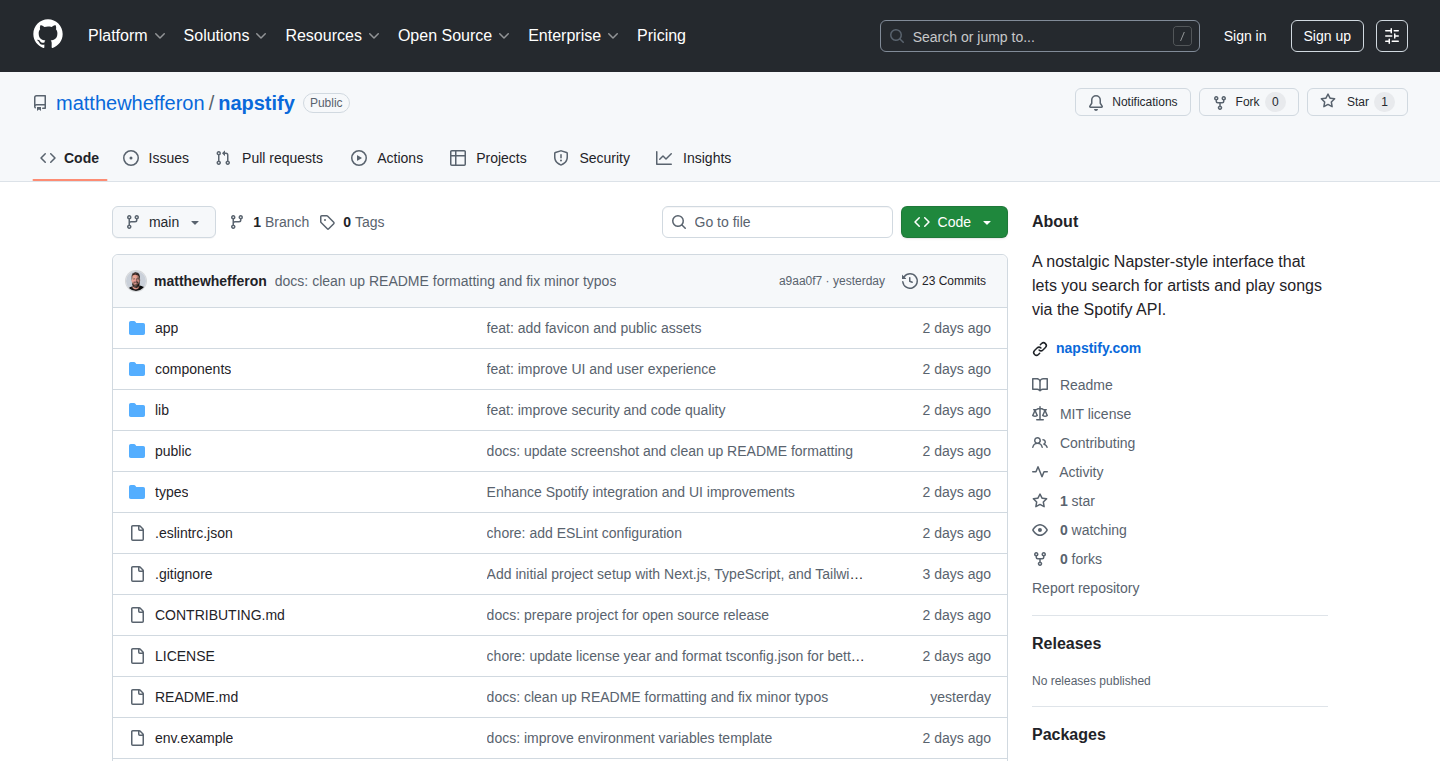

Highlight 1
Nostalgic Napster-inspired UI that provides an instantly familiar and intuitive music discovery experience.
Highlight 2
Integration with Spotify API enables instant playback of tracks within the browser, offering quick access to a broad catalog without downloads.
Highlight 3
Open-source and lightweight, making it easy to inspect, customize, and contribute for learning or experimentation.

Improvement 1
Playback reliability and scope may depend on Spotify permissions (potential need for a Premium account with Web Playback SDK) and device compatibility; clarify requirements and improve fallback behaviors.
Improvement 2
Feature parity with modern music apps could be expanded (queues, playlists, favorites, history, and improved search filters) to enhance usability and sharing.
Improvement 3
Onboarding, error handling, and accessibility could be strengthened ( clearer permission prompts, helpful error messages, keyboard navigation, and screen-reader support ).
Product Functionality
Clarify authentication requirements and playback limitations upfront. Consider adding a local queue, basic playlist support, and a history feature. Add a clear “try demo” mode for guests and a more explicit error handling flow when playback is unavailable.
UI & UX
Refresh the visual design to balance nostalgia with modern accessibility (contrast, focus states, responsive typography). Improve onboarding with a short tour, add a persistent search bar, and ensure keyboard navigation and screen-reader compatibility. Consider a theme toggle (light/dark) and customizable color accents.
SEO or Marketing
Host a live demo page with a simple landing site describing what Napstify is, its goals, and usage. Optimize for music-tech keywords, add meta descriptions, structured data, and a clean README with installation steps. Create a public changelog and contribution guide to attract developers. Build a small marketing one-pager or blog posts about the Napster vibe in a modern Spotify-backed tool.
MultiLanguage Support
Introduce internationalization (i18n) support so UI strings can be translated. Provide a language toggle, and consider regional documentation or section headers to accommodate non-English speakers. Start with a few key locales (e.g., Spanish, French, German) and collect translations/community contributions.
- 1
What is Napstify?
Napstify is a Napster-inspired web interface that uses Spotify’s API to search and play music directly in your browser. It’s an open-source, browser-based project designed for quick discovery and nostalgic interaction with music.
- 2
How does Napstify work?
The app runs in a web browser, authenticates with Spotify, queries Spotify’s catalog via the Web API, and streams tracks through the Spotify playback mechanism. It aims to provide instant playback in a lightweight, client-side environment.
- 3
Do I need a Spotify account or Premium to use Napstify?
To play tracks via Spotify’s playback mechanism, you typically need a Spotify account, and playback via the Web Playback SDK may require a Premium plan and user consent. Napstify is open-source and centers around Spotify integration, so expectations should align with Spotify’s access rules and limitations.
